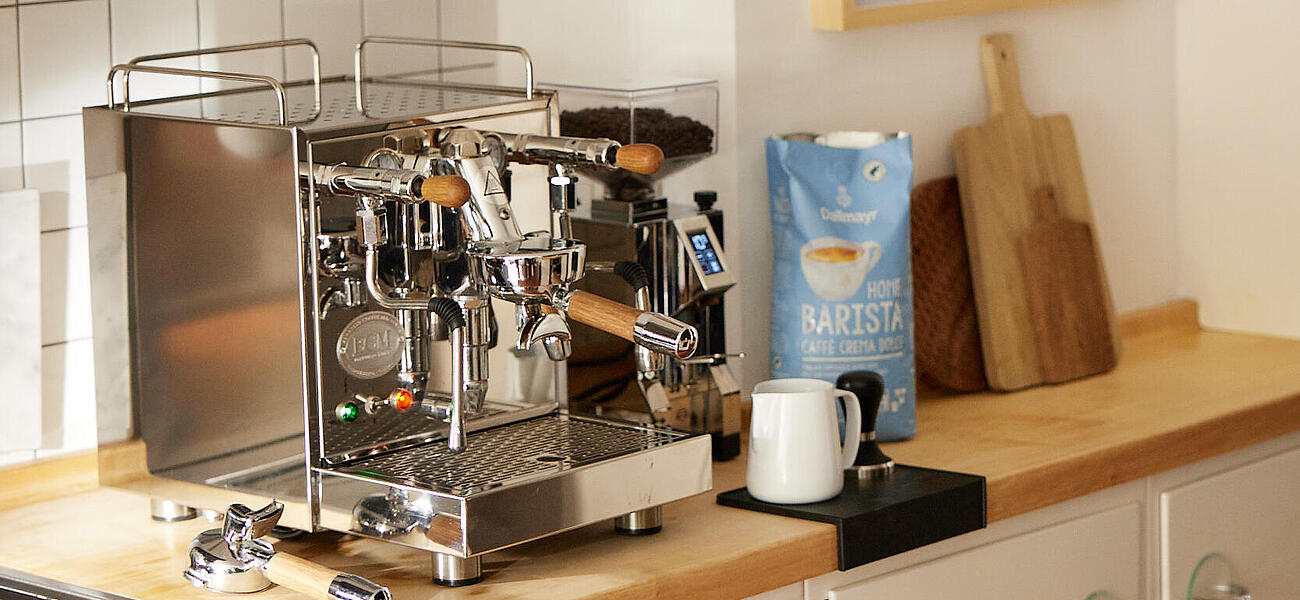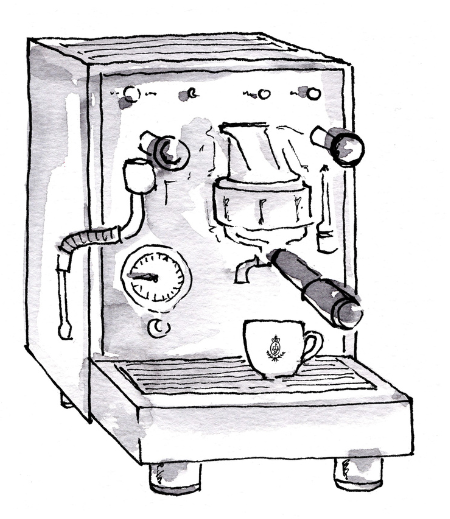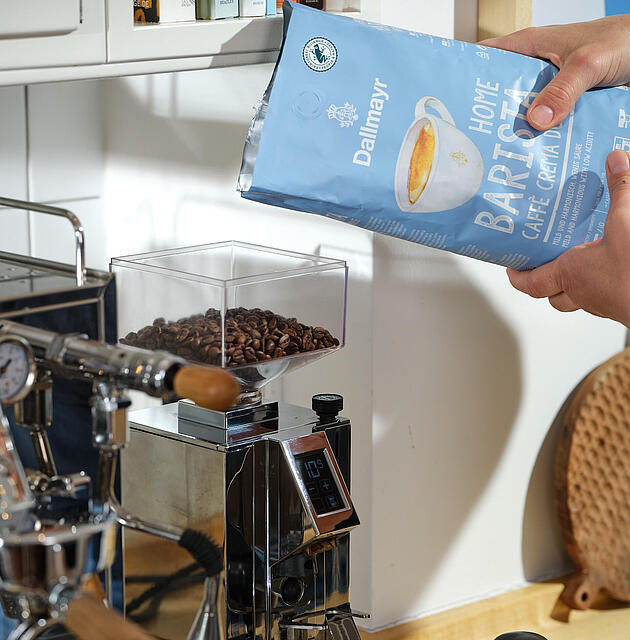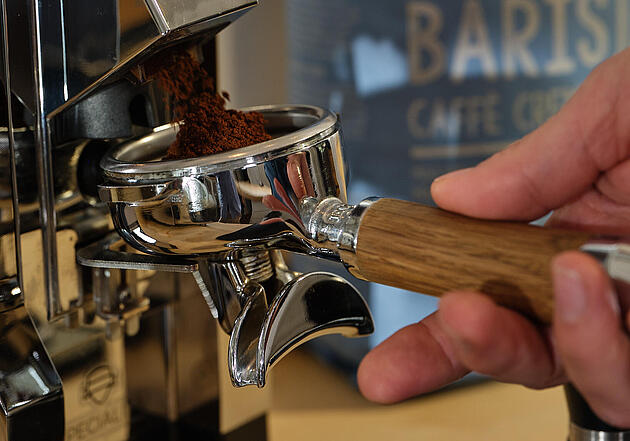So you’ve invested in your first portafilter espresso machine and want to impress your friends with a delicious espresso at your next brunch? No problem! We’ll show you how to conjure up a top-quality espresso with your machine and how to create the perfect crema.
Beans and grind size: the basis of a perfect espresso
For aspiring coffee pros, it’s important to have a good understanding of the coffee bean and know what to do with it. Whether it’s a light or strong and intense roast, the quality of the beans is crucial for a good espresso. Also important is grind size – and here, we explain why.
Why grind coffee in the first place?
Grinding breaks down the cell structure of the beans, releasing their aromas and making the substances in the coffee more soluble in water. The beans’ volatile aromas come into contact with oxygen, spreading the intense aroma of coffee around the room.
The finer the coffee’s grind size, the more surface area is exposed during brewing – offering the water a larger surface to “attack”. This means that during the same period of contact with hot water, considerably more substances are released than with coarsely ground coffee. Grind size is also significant for extraction speed – i.e. for the coffee’s flow rate.
Sour, bitter or perfectly balanced? It’s all down to the grinding level!
There’s an ideal grinding level for each method of preparation. We use a coarse grind for French press and a little finer for filter coffee. And when using an espresso machine, the coffee grains should have a consistency somewhere between that of table salt and flour. As a rule of thumb, the shorter the contact time with the water, the finer the coffee should be ground.
With a very fine grind size, the longer flow rate brings out the coffee’s bitter components, while a coarser grind emphasises the coffee’s “fruity” acidity. A coffee’s sweetness (sugar), caffeine and acids are dissolved quite quickly within the first few seconds.
For the perfect espresso, we’re looking to find the ideal balance between acidity and bitterness. Roughly speaking, we can say that the flow rate – i.e. how quickly the water flows through the coffee – should be 20 to 30 seconds. Grinding level is the simplest way to control this flow rate. You can then fine-tune the flow rate within this time window to suit your particular tastes.
Often overlooked: the grinder
A good grinder is at the very centre of good coffee preparation. The more uniform the ground coffee, the more consistent the extraction. The grind size needs to be adjusted depending on the coffee beans you use. But don’t forget that whenever you change this grinding level, you also need to consider the change in flow rate. Usually, there will still be old coffee grounds in your grinder as well. So make sure you remove these old coffee grounds from the grinder before experimenting with new grinding levels.
In addition to grind size, several further factors such as temperature and pressure play an important role in making the perfect espresso.
Our tip:
Practice makes perfect! It’s important to get to know your portafilter espresso machine, step by step. Play around a little with grinding levels, pay close attention to flow rates and compare them. Keep asking yourself if your espresso is balanced in flavour or whether it is too bitter or sour. Experiment with the different grind settings – and if you need support, our coffee experts from the Dallmayr Academy will be happy to help!



